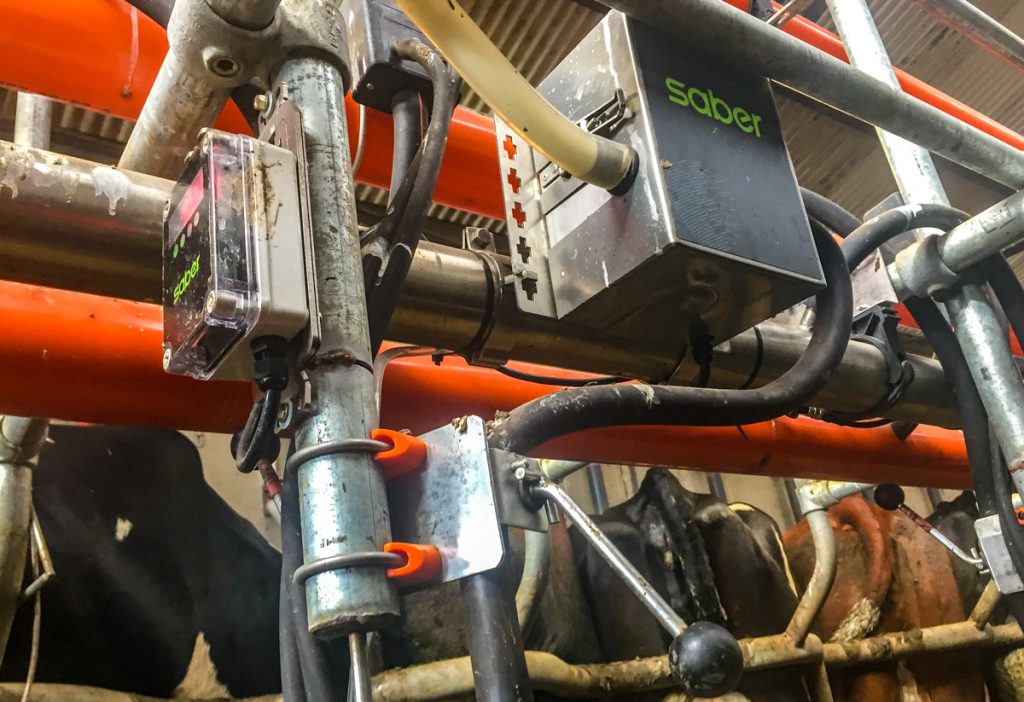Mastitis can be a costly problem on Irish dairy farms. High levels of somatic cell count (SCC) can adversely affect the processability of milk.
On average, Teagasc shows, mastitis costs Irish farmers €60/cow/year.
This figure comes from sub-clinical costs – such as milk quality penalties and the loss in milk production – and clinical costs. The latter includes: antibiotics; discarded milk; labour; veterinary; and culling.
Each year, the average farm will cull two cows due to issues relating to mastitis. Given that it costs €1,500-1,600 to bring a replacement heifer into the parlour and 1.63 lactations to achieve a return on this investment, it’s important that culling – especially due to mastitis issues – is minimised.
With sub-clinical mastitis infections, the udder and milk appear normal and there are no visible signs of infection. However, the SCC of the milk is raised.
Teagasc suggests that 30% of the herd is infected if an SCC level of 200,000-300,000 cells/ml is recorded. This jumps to 40% at 300,000-400,000 cells/ml.
An innovative way to tackle Ireland’s mastitis problem
LIC Automation, a New Zealand company, has brought an innovative product to the Irish market to tackle Ireland’s mastitis problem.
The company’s Saber CellSense is an automated, in-line sensor that provides users with live SCC results within two minutes of cupping the cow.
AgriLand recently caught up with LIC Automation’s Chris Murphy, the country manager for Ireland and the UK, to find out more at the product.
We launched in the market over 12 months ago, simply because we had people from Ireland coming back from New Zealand looking to solve the mastitis problem on Irish farms.
“We currently have 25 units working on Irish farms and there’s massive interest in the product. People are buying this system because they want to save costs and to stop dumping milk for no reason,” he said.
How does Saber CellSense work?
Murphy also explained how the system works, saying: “Saber CellSense measures SCC by measuring the DNA released from somatic cells in the milk.
“The amount of DNA released is directly proportional to the number of somatic cells in the milk. Saber CellSense uses a Californian somatic cell test to get an accurate result.”
After testing, he said, the system provides the farmer with accurate information on SCC levels. A simply traffic light system is also utilised when the data is viewed on a phone or computer.
Prior to milking, he said, the operator can input a set of parameters for SCC. Cows that have low SCC levels will flash up as green; those with high levels will present with a red light.
Murphy also touched on the benefits of the system, saying: “It allows you to do cheaper and better dry cow therapy and you are catching the animals in the sub-clinical stage.
“As a result, you are not dumping milk and you can use less aggressive treatments to get your cow back in action, thus reducing your antibiotic bill.”
Cost and payback
On average, he said, each unit costs €1,500 and it’s installed in every fourth stall.
“Across the herd, this allows you to spot check each of your cows 2.5 times each week and you are roughly checking 25% of your herd at each milking.
“The premium at the moment is 2c/L and if a herd producing one million litres drops its SCC to premium payable limits; that’s a return of €20,000 by just lowering the SCC.
If a farm is operating with a SCC of 200,000 cells/ml, it can easily drop to 100,000 cells/ml using the system and it will pay for itself in less than one year.
“The return on investment is roughly five months,” he said.
A farmer’s perspective
JP Kiernan milks a herd of 60 Holstein Friesian cows in Carrickmacross, Co. Monaghan. As it stands, his herd is producing almost 2,200L each day or just over 36L/cow/day.
Kiernan told AgriLand that he had major problems with SCC prior to installing the Saber CellSense system on his farm.
My herd’s cell count was 580,000 cells/ml last year. Since installing the system, it has dropped to 160,000 cells/ml – a reduction of over 70%.
“I needed to take charge of the cell count and Saber CellSense was definitely a big help. It can identify problem cows before they go clinical and it makes treatment very easy,” he said.




